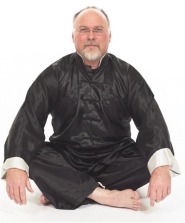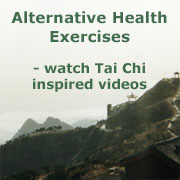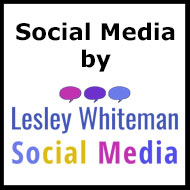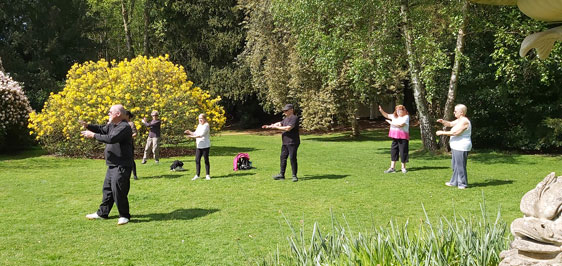
I am delighted to confirm that dates for classes have been confirmed at the Swiss Garden as follows:
THU 18 MAY 2023,
THU JUNE 22ND 2023,
THU JULY 27TH 2023 &
THU SEPTEMBER 21ST 2023
Please see www.shuttleworth.org/product/tai-chi/ for details and to book your place.
The garden should look wonderful as it all comes into bloom – so long as the weather holds! So sunblock and raincoats – but actually we have a covered space if we need. Plus – we are getting used to being joined by the peacocks providing a side attraction as they stroll about the lawn.
I am pleased to note that Monday classes will run in Shefford this Monday and through including the Bank Holiday on May 29th – as usual they will be from 2.30pm at the Community Hall.
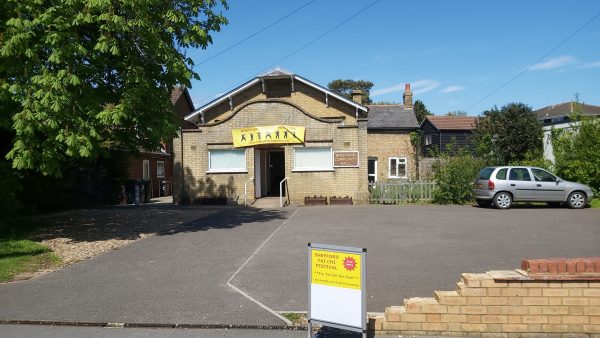 Each year we celebrate the World Health Organisation Tai Chi Day at Shefford Community Hall with demonstrations, discussion and taster sessions – post covid we were pleased to meet a good number of people expressing an interest in joining classes.
Each year we celebrate the World Health Organisation Tai Chi Day at Shefford Community Hall with demonstrations, discussion and taster sessions – post covid we were pleased to meet a good number of people expressing an interest in joining classes.
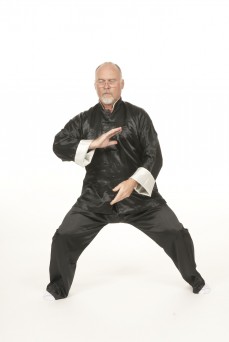 One or two had experienced Tai Chi before but it was also nice to introduce the practice to others who may have seen or heard of it but never participated.
One or two had experienced Tai Chi before but it was also nice to introduce the practice to others who may have seen or heard of it but never participated.
I am looking forward to this Saturday when Shefford Tai Chi will hold its annual open day at the Shefford Community Hall from 10.00 to 16.00 – I will be offering taster sessions and discussion about Tai Chi for health and falls prevention – and if anybody would like to look at the martial aspects I will also be happy to cover those.
Free tuition will be available to existing students from the classes at Shefford, Biggleswade and Flitwick.
I look forward to meeting anyone interested who cares to drop in.
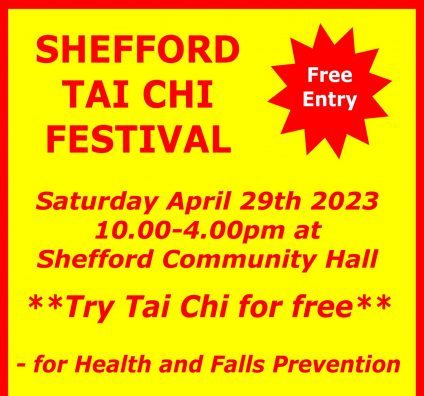 Shefford Tai Chi will again welcome visitors to our annual Tai Chi Festival – held on World Tai Chi and Chi Kung Day – which is always on the last Saturday of April – so in 2023 it will be on 29th April from 10.00 to 4.00pm at the Shefford Community Hall, just off the High Street next to the chip shop at SG17 5AX.
Shefford Tai Chi will again welcome visitors to our annual Tai Chi Festival – held on World Tai Chi and Chi Kung Day – which is always on the last Saturday of April – so in 2023 it will be on 29th April from 10.00 to 4.00pm at the Shefford Community Hall, just off the High Street next to the chip shop at SG17 5AX.
This is our 6th year of running these open days and we are delighted to again invite anybody interested to explore the health and other benefits of Tai Chi, to drop in for a chat, a free sample class or to watch a demonstration.
We would also welcome other local martial arts and alternative therapy practitioners to join us in presenting demonstrations, sample treatments or simply to discuss their art with visitors ( there is no charge to participate and visitor entry is free of charge). If you are a local group that would fit within the alternative health and martial arts description and would like to do a demonstration, please contact Ian. at mobile 07860 218334 or email [email protected]
We do seem to have a lot of bank holidays in the next weeks so please note that classes will not take place as follows:
Sunday 9th April Shefford
Monday 10th April Shefford and Flitwick
Monday 1st May Flitwick
Monday 8th May Flitwick
Monday 29 May Flitwick
Our first class at Flitwick Village Hall on Monday morning – 11.30 – went really well with an enthusiastic group who had a very pleasant time doing our relaxed exercises to loosen and strengthen our bodies, – for the first half hour. This was followed by a session of learning the first simple movements from the Laojia form – a choreographed pattern that provides a basis for regular practice and for us to learn how to move in a Tai Chi way.
That is to say relaxed movement from the centre with good connection throughout the body. In order to achieve this we initially worked on loosening and then focused on an upright posture allowing relaxed alignment of our structure.
Flitwick Village Hall is a lovely venue for Tai Chi – there is a load of space with pleasant outlook and plenty of parking. The floor is excellent and the acoustics are good – I look forward to building a very friendly class. See here for details of classes in Flitwick.
Congruence is simply the development of body, mind, and spirit around compatible effective world models – traditionally referred to as the six harmonies. For example a mental model of hard/soft balance may be developed in our bodies as an effective way to move and in our emotional selves as a way to deal with tensions and with life in general. The way that these three aspects interconnect is greatly empowered by their compatibility.
Thus Taoism and Buddhism guide our physical training and combine to give us hard/soft Tai Chi movement.
We should carefully consider the Tai Chi principles of relax, move from the centre and be connected ( one thing moves, everything moves). Essentially if we learn to relax and move then everything follows. The rest is adaptation ie it is about how to use that way of moving.
One could certainly make a very good case that body/sports science was originated by the early Tai Chi practitioners or their Taoist and martial arts forerunners – since core to Tai Chi is the idea of observing and creating a balanced body structure. This inevitably takes us to look at our soft tissue condition including slow twitch muscles and facia which then involves working with our emotional/mental training to promote an integrated organism.





